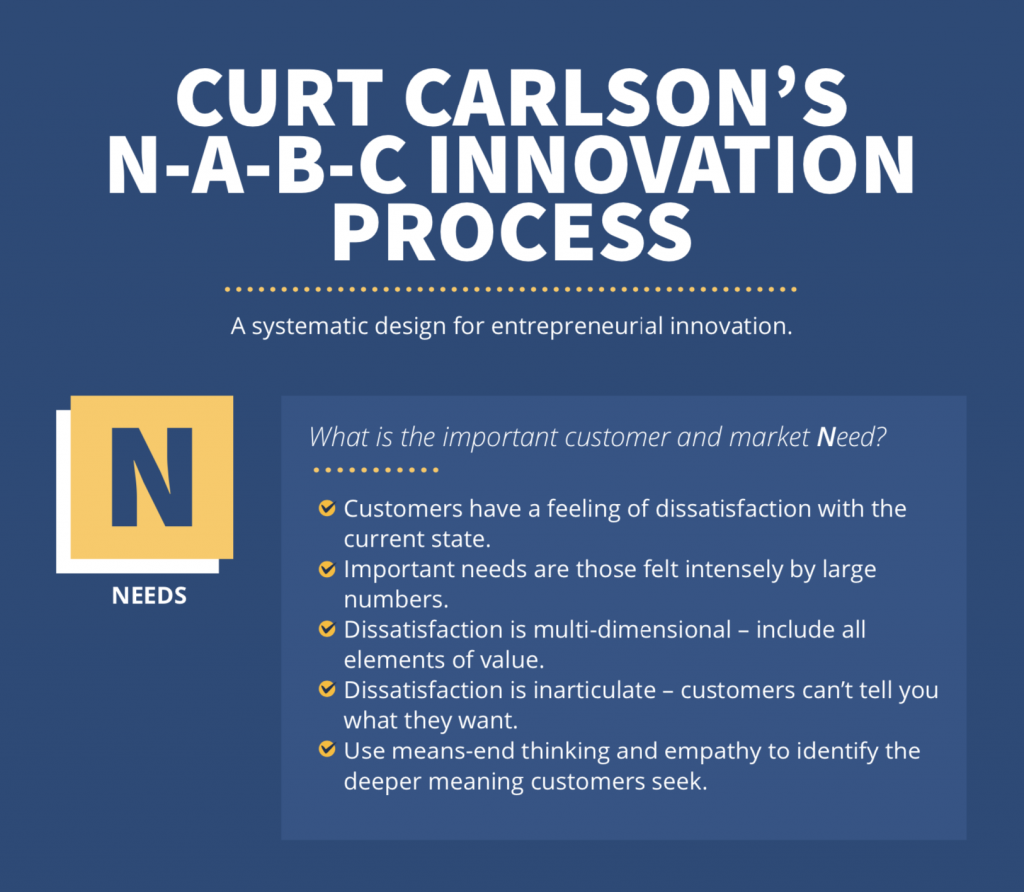Removing Barriers Is The Pathway To Value Creation.
The purpose of every business is to create new value for customers. The people and institutions who purport to teach us how to do it try to make it very complicated. You’ll need a creative idea, a new business model, technological innovation, new distribution methods. There’s a nine-box business model canvas template to fill out. Consultants are needed to get the process right, and a marketing agency to craft a promise to potential customers and spend advertising dollars to put the persuasive word out. They say that customers can’t imagine how the new value will benefit them, and so innovative new products and services and creative communications are a business imperative.
The great challenge, the great creative difficulty is presented to businesses as the need to establish something completely new, never known or done before. That’s intimidating. Given all the smart people, successful entrepreneurs, highly-resourced corporations, and well-funded R&D projects that have gone before, how can a business feel confident about coming up with something entirely new?
Happily for the future of value creation, that is not exactly the challenge. The true need is not for creation but removal. And the act of removal takes us in the direction of simplification.
How do customers think about pursuing new value? To begin with, they probably don’t use that word or that terminology. They think about goals – what they want to have happen in their life, the experiences they want to enjoy, the hopes they have for themselves and their kids and their companies and their projects. They think about the values that are most important to them, like family relationships, economic security, achievement, wealth, health, and social standing (there are many more, of course). Then they think about the barriers to the realization of their goals and values. What is getting in the way? What’s preventing them from accomplishing what they want to accomplish and from experiencing what they want to experience?
Here lies the key to the challenge of value creation for customers. It’s the barriers. If businesses can identify the barriers that people feel are in their way, and can help remove them or navigate around them or render them inoperative, then new value is created. No brilliant new invention is needed, no creative ideation that has never before been conceived, no light bulb going off.
The trend towards convenience provides an example. Amazon is increasing its revenues and serving more customers on more occasions by giving the gift of convenience – order online with a minimum number of clicks and delivery to your door could be same day or certainly much faster than in the past. There’s no great creative insight here. People would rather receive things they’ve ordered sooner than later. They’d rather have the shopping experience be faster rather than slower. They’d rather have a wide selection than limited choice and they’d rather not be frustrated by out-of-stock conditions. What’s getting in the way of these preferences? What are the barriers that customers encounter? Amazon has built a business that approaches $500 billion in revenues by removing these barriers. They call it “Working Backwards” – identify what gets in the way of desired customer experiences and work backwards from there to fix them. (Former Amazon executives Colin Bryar and Bill Carr wrote a book by that title to help you learn all about the approach.)
The process of removing barriers is inherently simple. Just talk to customers. What do they feel is getting in their way? What’s frustrating them? What’s driving them crazy? They can’t invent new solutions but they most certainly can tell you about barriers that they face – and they’ll probably do it passionately and with vehemence (which is a good gauge of how important the issue is to them, and how grateful they’ll be if you remove the obstacle).
B2B value creation is just as much about barrier removal as B2C value creation. What are the goals and aspirations of your business client? What’s impeding achievement? If they are facing difficulty in identifying barriers in the first place, offer them help with research or analysis or consulting. In this case, their barrier is unclear understanding and you can help get over it. If they’ve shone their own light on the causes for under-performance, go to the next step of analysis for them and help them identify removable obstacles. Often, the term “solution” – as in solution to a problem – is the wrong framing. Your client might more readily accept your value proposition of removing obstacles so that they can make forward progress on their own terms than they would adopt your solution to a problem that implies that they’re not smart enough to figure it out for themselves.
Rather than formulate value creation in terms of inventing never-before-conceived benefits for customers – which can tempt businesses into making excessive claims for their value propositions – it’s often a better pathway to effective innovation to focus on removing barriers, lowering obstacles and eliminating constraints. You are not then putting customers in the position of having to learn new things to want, things that they weren’t previously aware were on offer. Your business will be in the much more advantaged position of helping customers attain what they already want and have been denied or have deemed unattainable or unreachable. Removing barriers is a much more credible value proposition – customers already have a clear picture of the barriers that are in place for them, and therefore can easily envision a world without that barrier. It’s freeing, empowering, enabling. On the other hand, any proposal you make about your innovative introduction of new benefits requires a much greater cognitive effort on the customer’s part. You’re asking them to evaluate a world they can’t imagine, as opposed to one they can.
Let the customer experience a world without barriers. They’ll love you for it.
